15 Quick And Easy Protein-Rich Breakfasts That Are Dietitian Approved

What if I told you that you could eat delicious and satisfying breakfasts, like pancakes, smoothies, scrambled eggs, and even breakfast sandwiches while losing weight and improving your overall health? You can have these 15 quick and easy protein-rich breakfasts from my book Zero Belly Breakfasts, each not only approved by dietitians but also designed to help you shed belly fat and boost your metabolism.
Starting your day with a protein-packed breakfast is key to feeling full, energized, and on track with your health goals. The American Heart Association recently emphasized the importance of eating earlier in the day, linking breakfast to improved heart health and reduced risks of cardiac arrest and stroke. Studies show that the body processes sugars more efficiently during the day, making breakfast the perfect time to consume nutrient-dense foods. Despite this, more than 30% of people skip breakfast, which is partly why obesity rates remain high.
The recipes in this collection contain powerful fat-burning proteins, fiber, and healthy fats that can help you reach your weight loss goals. In fact, regular consumption of high-protein breakfasts has been linked to increased satiety, reduced overall daily intake, and even a reduced risk of gaining belly fat. This is because proteins, such as those found in eggs, yogurt, and plant-based smoothies, trigger the body's natural mechanisms for building lean muscle and maximizing calorie burn.
Mango Lassi Smoothie
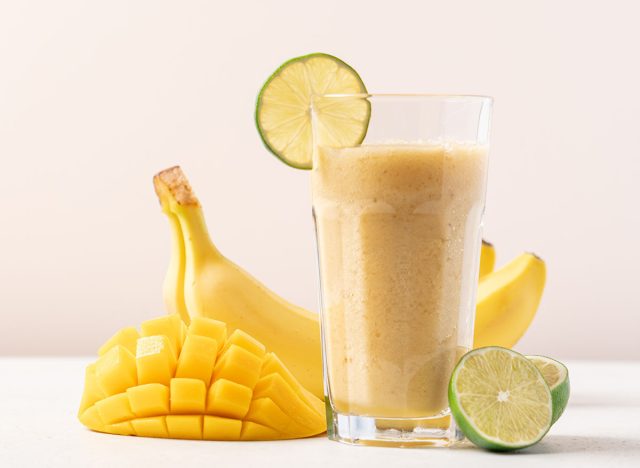
This smoothie provides a tropical start to your day with a protein punch.
- ½ cup mango
- 1 frozen banana
- 1 cup unsweetened coconut milk
- 1 Tbsp cardamom
- 1 scoop vanilla plant-based protein powder
- Water to blend as necessary.
Protein: 19.3 g per serving.
Strawberry Pistachio Cream Smoothie
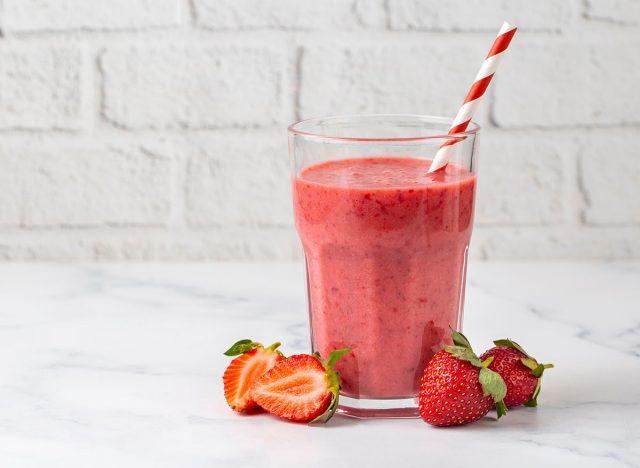
Packed with healthy fats and protein, this smoothie keeps you full and satisfied.
- ½ cup frozen strawberries
- ¼ cup pistachios
- ½ avocado, peeled and pitted
- 3 ice cubes
- 1 tsp vanilla extract
- 1 scoop vanilla plant-based protein powder
- Water to blend.
Protein: 24.7 g per serving.
The Green Light Smoothie
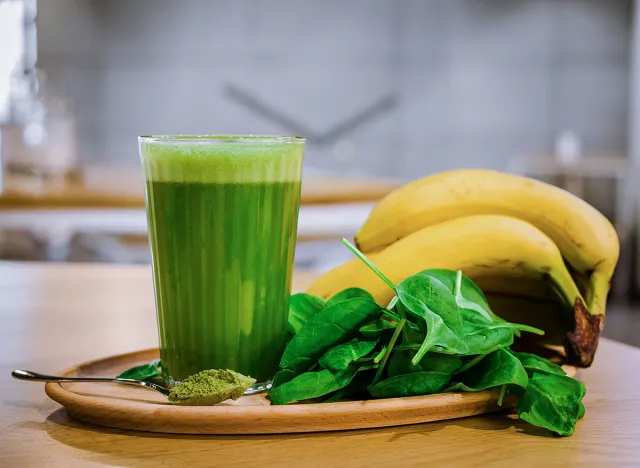
Filled with nutrient-dense spinach and pumpkin seeds, this smoothie provides a protein and fiber boost.
- 1 frozen banana
- 1 handful spinach
- ¼ cup pumpkin seeds
- 1 cup unsweetened almond milk
- ½ scoop vanilla plant-based protein powder
- Water to blend (optional)
Protein: 19 g per serving.
Anti-Inflammatory Turmeric Pineapple Smoothie
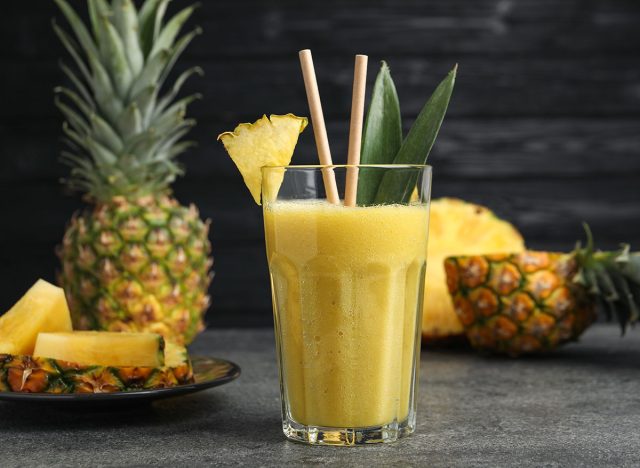
This recipe combines anti-inflammatory ingredients like turmeric and pineapple with protein-rich hemp seeds.
- ½ cup coconut light milk
- 1 Tbsp coconut oil
- ½ cup frozen pineapple
- ½ banana
- 1 tsp turmeric
- 1 Tbsp hemp seeds
- Ice and water to blend
Protein: 8 g per serving.
RELATED: The Best Pre-Workout and Post-Work Meals for Burning Fat
Classic Scrambled Eggs with Spinach
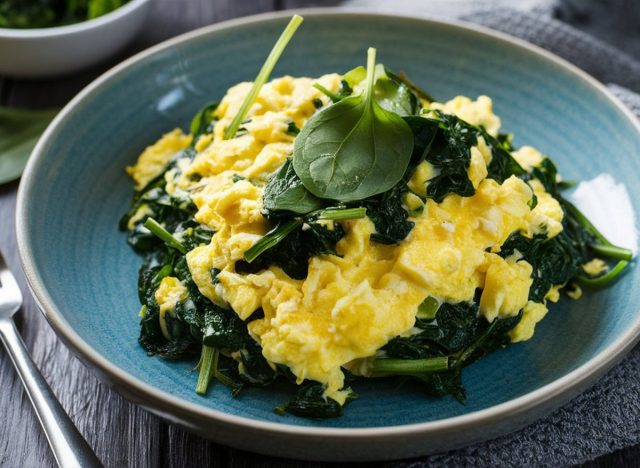
Scrambled eggs are a quick way to load up on protein, and adding spinach boosts the fiber content.
- 2 large eggs
- 1 handful spinach
- Salt and pepper to taste
- Cook in olive oil
Protein: 13 g per serving.
Quinoa Porridge
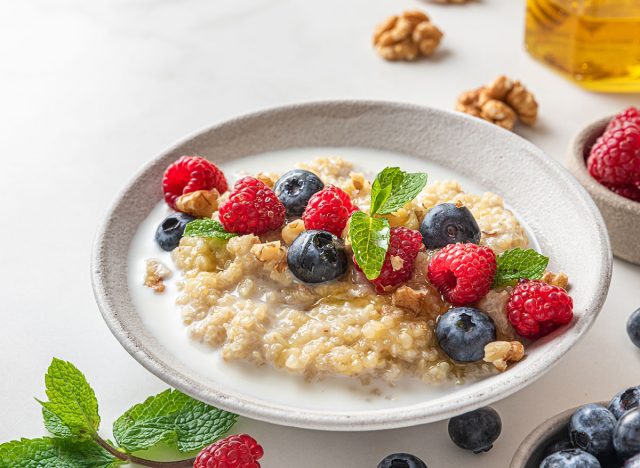
Quinoa is a great grain alternative to oats and offers more protein.
- 1 cup cooked quinoa
- ½ cup almond milk
- 1 Tbsp almond butter
- 1 tsp cinnamon
Protein: 8 g per serving.
Smoked Salmon and Avocado Toast
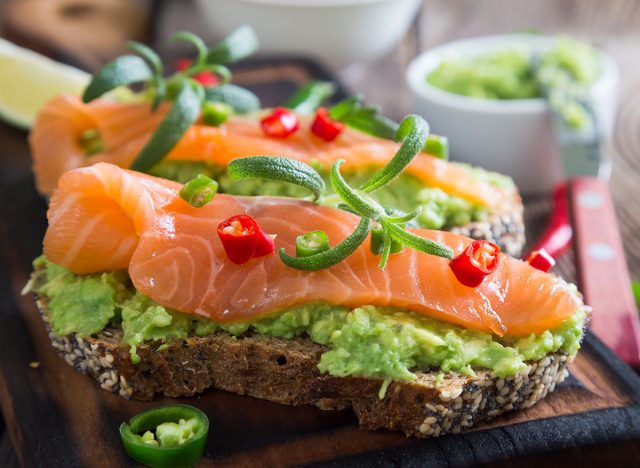
A delicious combination of protein and healthy fats that make a perfect breakfast.
- 2 slices sprouted grain toast
- 2 oz smoked salmon
- ½ avocado, mashed
- Salt, pepper, and lemon juice for flavor
Protein: 17 g per serving.
Greek Yogurt Parfait with Chia Seeds
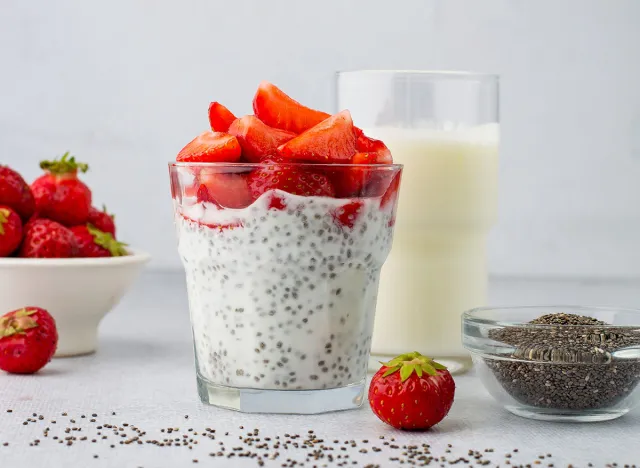
Greek yogurt is an excellent source of protein and pairs well with fiber-rich chia seeds.
- 1 cup Greek yogurt
- 1 Tbsp chia seeds
- ½ cup mixed berries
Protein: 15 g per serving.
RELATED: I Lost 45 Pounds and Transformed My Dad Bod by Walking More and Lifting
Egg and Veggie Scramble
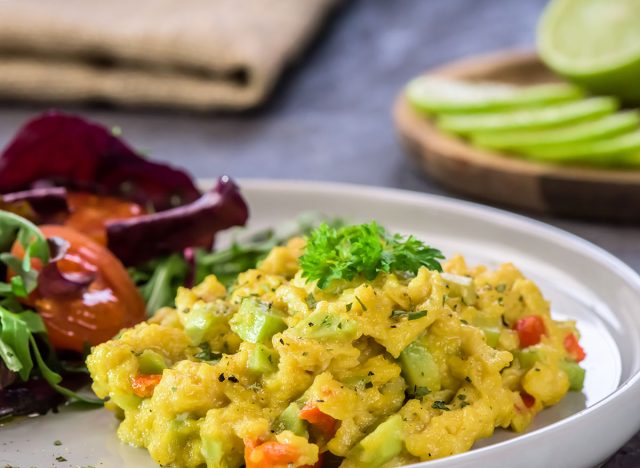
Add veggies like bell peppers and onions to scrambled eggs for an extra nutrient boost.
- 2 large eggs
- ½ cup diced bell peppers
- ¼ cup onions
- Cooked in olive oil with salt and pepper
Protein: 14 g per serving.
Protein Pancakes
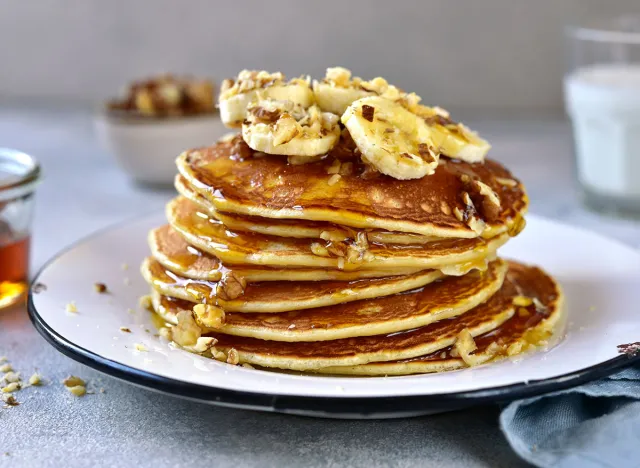
These pancakes are a perfect high-protein treat for breakfast.
- 1 scoop vanilla protein powder
- 1 egg
- 1 banana, mashed
- 1 tsp baking powder
- 1 Tbsp almond milk
Protein: 20 g per serving.
Almond Butter and Banana Toast
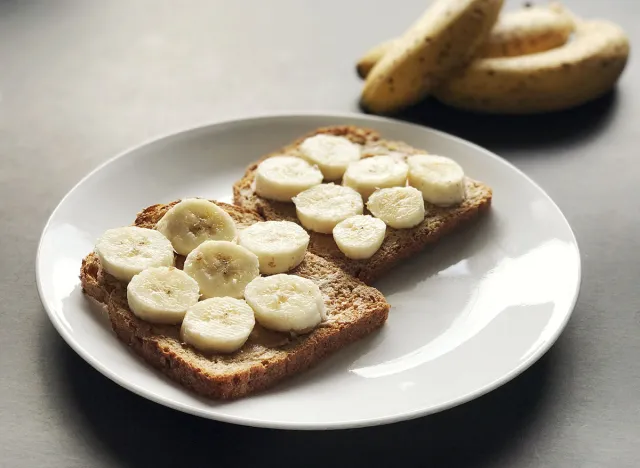
This quick and easy breakfast is packed with healthy fats and protein.
- 2 slices sprouted grain toast
- 1 Tbsp almond butter
- 1 banana, sliced
Protein: 8 g per serving.
RELATED: Top 15 Foods You Should Eat Every Day to Protect Your Liver
Cottage Cheese with Berries and Honey
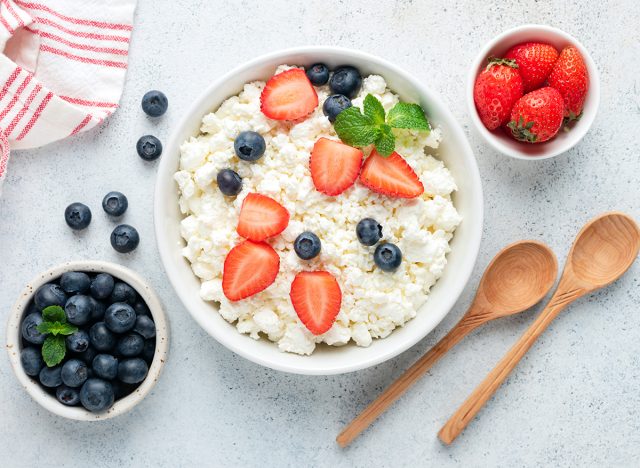
Cottage cheese is a fantastic source of protein and pairs well with fresh fruit.
- 1 cup low-fat cottage cheese
- ½ cup mixed berries
- 1 tsp honey
Protein: 27 g per serving.
Peanut Butter Oatmeal
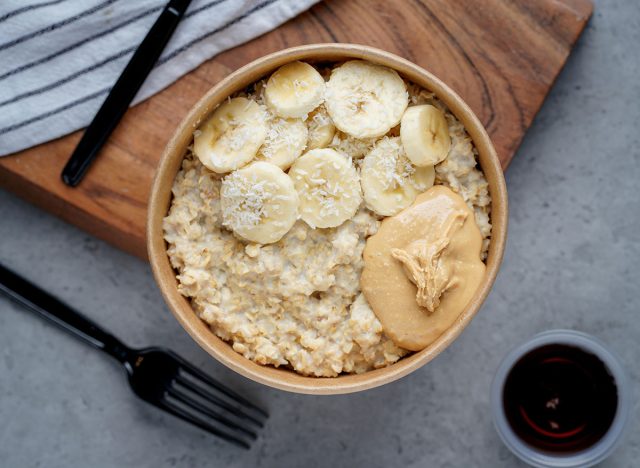
Adding peanut butter to your oatmeal increases the protein content significantly.
- ½ cup rolled oats
- 1 Tbsp peanut butter
- 1 cup almond milk
- 1 tsp cinnamon
Protein: 12 g per serving.
Tofu Scramble
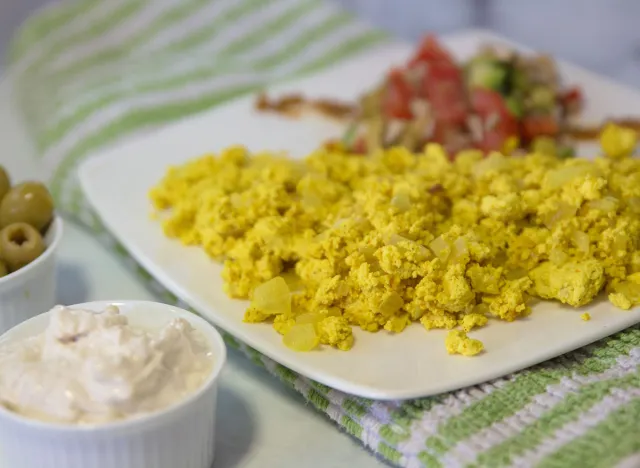
A plant-based alternative to scrambled eggs, tofu provides a great protein-packed breakfast.
- 1 cup firm tofu, crumbled
- ½ cup diced vegetables (bell peppers, onions)
- 1 tsp turmeric for flavor
- Cook in olive oil with salt and pepper
Protein: 20 g per serving.
RELATED: I Eat Rice Every Day and Lose Weight with My Surprising Carb Trick
Turkey Sausage and Egg Breakfast Sandwich

For a heartier breakfast, this sandwich provides plenty of protein to fuel your morning.
- 2 turkey sausage patties
- 1 whole wheat English muffin
- 1 large egg
- 1 slice low-fat cheese
Protein: 25 g per serving.
These easy, dietitian-approved recipes will keep your mornings simple yet nutritious, helping you stay full and satisfied while meeting your protein needs. Enjoy the convenience of quick prep and delicious flavors! And if you enjoyed this article, take advantage of these 15 Quick Ways to Lose Body Fat Percentage in a Week.




